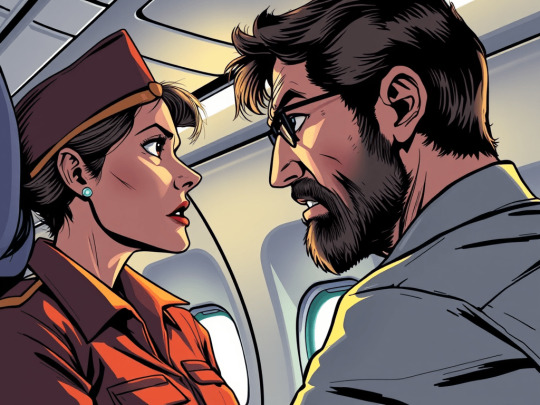#Second_Generation
Explore tagged Tumblr posts
Link
When connected to a Vision Pro headset In addition to new smartphones and watches, Apple introduced the updated AirPods Pro 2 headphones the day before yesterday. The new version received a case with USB-C, but that’s not all. Specifically, the headphones boast support for 20-bit lossless audio at 48 kHz and ultra-low latency when connecting the headphones to Apple's new Vision Pro headset. It turned out that only the updated version of AirPods Pro 2 will have this feature. [caption id="attachment_55902" align="aligncenter" width="780"] AirPods Pro 2[/caption] Just a year has passed, and Apple has turned AirPods Pro 2 into a “pumpkin” Yes, regular AirPods Pro 2 with a case with a Lightning port will not receive Lossless audio support with any update. There may be hardware differences, but it cannot be ruled out that this is simply a decision by Apple to sell more headphones. At the same time, the original AirPods Pro 2 came out only a year ago, and the third generation, will be released no earlier than a year later, but it turns out that the original version is now inferior to the updated one. Let us remind you that the updated modification also received moisture protection (IP54).
#active_noise_cancellation#AirPods_Pro_2#apple#Apple_Earbuds#Audio_Accessories#audio_technology#Bluetooth_earphones#Earbud_Upgrades#High_Quality_Sound#In_ear_headphones#iOS_Device#noise_cancelling#Premium_Audio.#Second_Generation#true_wireless#upgraded#wireless_earbuds
0 notes
Text
...
OK FINE.
Godzilla walks at approximatly 8.5 mph(1). At least, '54 Godzilla does, other godzillas travel at other speeds, but I found 37 mph and 25 mph being other reasonable values.(3,4)
The Earth is 24901 miles in circumference around the equator. (5)
So, depending on the kaiju you are facing down, they may take:
2930 hours (122 days)
673 hours (28 days + an hour or so)
996 hours (41.5 days)
Presuming of course the monster does not rest or take breaks, and is unimpeded by such mortal concerns like the sea or mountains.
1: https://youtu.be/kDkbrkPB27k?t=678
2: https://www.wikizilla.org/wiki/Godzilla_(MonsterVerse)#Amphibiousness
3: https://www.wikizilla.org/wiki/Godzilla_(Heisei)
4: https://www.wikizilla.org/wiki/Godzilla_(Godzilla_2000:_Millennium)
5. https://www.wolframalpha.com/input?i=earth+equator+circumference
behind the scenes below the more.
Behind the scenes:
I then found the PowerCrunch video(1), which gives, helpfully, a breakdown of Godzilla's primary characteristics (including walking at 8.5mph). This is, alas, only for the '54 Godzilla, which means I had to go look at other sources too. This got me to "Wikizilla", which gave me no land speed (except a peak sprint of 200mph), but a swimming speed of 40-50 knots. Again, only for one Godzilla, in this gase "MonsterVerse"(2)
So my first enquiry into walking speed was to the wonderful site Wolfram Alpha. I'm like 95% sure any of my enquries could be dealt with by Wolfram Alpha. I was wrong.
https://www.wolframalpha.com/input?i=Godzilla+walking+speed
Wolfram alpha helpfully found me both films - Godzilla, and Speed - and thus declared a bunch of useful facts about Godzilla and Speed. My key takeaway from this was the Godzilla would explode if it dropped below 50 miles per hour.
This is obviously wrong.
Luckily, Wikizilla gives a whole host of different godzillas, so let's look at that now:
The Second Generation Godzilla can fly at Mach 1 (https://www.wikizilla.org/wiki/Godzilla_(Second_Generation))
The Heisei era Godzilla has average speeds of 60 km/h (37 mph) on land and 45 knots at sea. (https://www.wikizilla.org/wiki/Godzilla_(Heisei))
Godzilla 2000: Millenium's Godzilla can walk at 40 km/h (25 mph). (https://www.wikizilla.org/wiki/Godzilla_(Godzilla_2000:_Millennium))
Then, I simply found the equatorial Circumference of the Earth (which is 400075 km or 24901 miles).

20K notes
·
View notes
Text
Missiles and Meal Service: The Hidden Toll of Flying in War-zones
Common occupational hazards in aviation; the not so new flight deck stressors would encompass turbulence, delayed pushbacks, and that one passanger having an issue with someone reclining their seat (this is so very common, believe me). Let’s not forget another one who thinks the seatbelt sign doesn’t apply to them while on active runway (because they are just itching for a snack they left inside their carry-on luggage in the overhead bin. Opens bin, then bag falls off on them and everyone around. SMH)
Back to business. Pilots and cabin crew flying over the Middle East lately, especially in and out of Qatar, well, there’s a new, less subtle source of anxiety: missile attacks. Who doesn’t know the news by now?
Yes, flying into Doha these days might involve dodging airspace closures, U.S. airbase targets, and the occasional Iranian and Israeli news. Glamorous, right?
Very.
While passengers worry about delayed in-flight meals and Wi-Fi speeds being too slow or disconnecting , the crew up front and in the aisles are dealing with something much much heavier: the psychological toll of flying through a region where geopolitics are very unpredictable, stormy, and always just over the horizon.

What Happened in Qatar Exactly, you ask?
In resent years, we’ve witnessed sensitive airspaces and in response, airlines have shut down their airspaces. Flights being rerouted faster than a teenager dodging chores have become commonplace, and airline dispatchers around the world had one collective panic attack.
Now just imagine this. Inflight, flight crew are prepping beverage carts while air defence systems light up the radar. Boom-Chaka-Boom! Just another day in the skies.
Cabin Pressure: Flying with a Side of Adrenaline
Yes, crew (deck crew and cabin crew) are trained to handle demarcates, but war is not an average Emmergency! It’s one thing to worry about fuel efficiency. It’s another to fly over a region where missiles are a real-time hazard.
There is a huge difference between trusting an aircraft, the team, and trusting geopolitics.
Constant anticipatory anxiety.
Hypervigilance, even on layovers.
The unsettling knowledge that their aircraft might share airspace with defense drones, military jets, and… well, more missiles.
Hospitality Meets Hostility

Cabin crew, as you know, are the face of calm, smile and all. Even so, smiling while you serve fish, beef and a gluten free meal on a flight skimming a conflict zone? That’s dark art right there.
Results:
Crew becoming emotionally disconnected from their jobs.
Guilt when evacuating people while others are left behind. 2020 clears throat!
Luxury inflight service inside a pressure cooker floating mid air at 40,000 feet while those on ground are ducking. Definately dystopian!
More Fuel, More Detours, More Fatigue
Yep! Practical stress:
Flights being rerouted to avoid hot zones, adding hours to duty time.
Longer flight hours mean more fatigue, which affects both performance and emotional bandwidth.
There’s no glamour-AT ALL in a 15 hour turnaround because there is no clearance to land.
What Airlines Are Maybe doing
Critical Incident Stress Management teams.
Therapy appointments.
Pre and post dispatch briefings.
Even so, lots of crews feel out of the loop. Why you ask?Because, you get the news that you’re flying a risky zone when you’re already on it.
Hidden Costs: Forget Fuel and Insurance
Mental Health RiskWhat It Looks LikePTSD or traumaFlashbacks, fawning, sleep interruptions, avoidanceBurnoutEmotional numbness, lack of purposeAnxietyReccuring worry, overanalysing proceduresIsolationFeeling detached and lack of support on layovers or at home
These risks don’t show up on a flight log, but hey, they impact safety, morale, and retention. We talk about maintaining aircraft fatigue limits. What about crew fatigue limits?
Where Do We Go From Here?

How about a Flight Plan for Mental Health in Conflict Zones:
Transparent Security Briefings.
Weight & balance before takeoff is paramount, so is mental health balance.
Flight Debriefs After High-Stress Flights.
Better Global Oversight, meaning ICAO, IATA and other relevant bodies must update protocols for mental wellness involving high-risk routes.
Bottom line, pilots and cabin crew are indeed professionals for they train, adapt, and make sure to get the job done. But, they are people too and not robots. People who fly into the world’s most dangerous zones with nothing more than a safety manual and nerves of steel.
We owe them patience, understanding, protection and genuine support as they navigate war zones with grit and grace.
Fly safe. Check on your crew friends, and just maybe skip the missile jokes during boarding.
Source: Missiles and Meal Service: The Hidden Toll of Flying in War-zones
3 notes
·
View notes
Text
2nd Generaction
2nd Generaction
The period of second generation was 1959-1965. In this generation transistors were used that were cheaper, consumed less power, more compact in size, more reliable and faster than the first generation machines made of vacuum tubes. In this generation, magnetic cores were used as primary memory and magnetic tape and magnetic disks as secondary storage devices. In this generation…
View On WordPress
0 notes